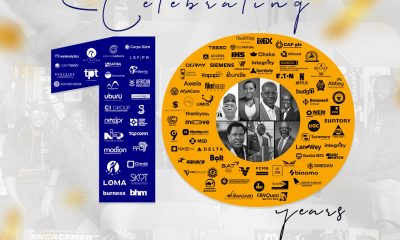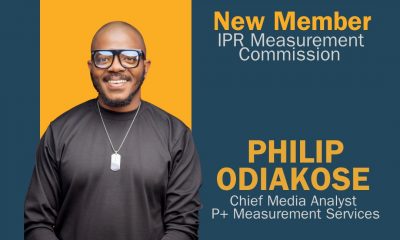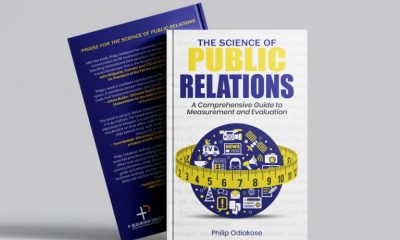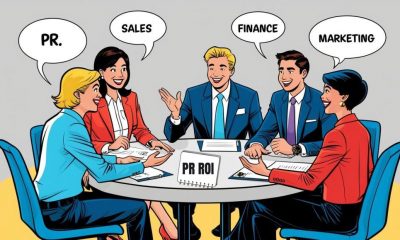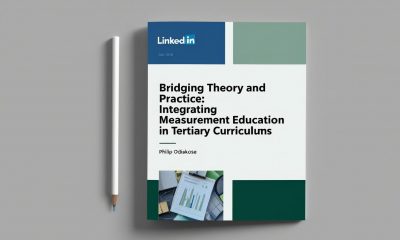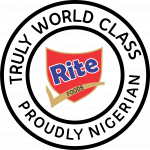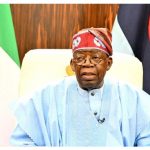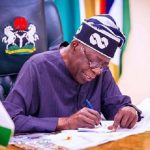Brands/Products
A Call for Regulation of Nigerian Media Monitoring and Intelligence Industry

By Philip Odiakose
The Nigerian media monitoring and intelligence industry has witnessed significant growth and development in recent years. With the proliferation of digital media platforms, monitoring and analysing media content has become increasingly important. However, alongside this growth, concerns have arisen regarding the lack of regulation within the industry. This article explores the need for comprehensive regulations to ensure transparency, accountability, and ethical standards within the Nigerian media monitoring and intelligence sector.
Understanding Media Monitoring and Intelligence
Media monitoring and intelligence involve the systematic collection, analysis, and interpretation of media content, including print (newspapers and magazines), broadcast (TV and radio), OOH (out-of-home), and digital media (websites and social media). It serves as a valuable tool for individuals, organizations, and governments to track public sentiment, manage reputation, and gain insights into media coverage. Media monitoring and intelligence agencies utilize advanced technologies, including natural language processing and machine learning algorithms, to scan and analyze vast amounts of media data.
The Unregulated Landscape
Nigeria’s media monitoring and intelligence industry operates without clear guidelines or oversight. This lack of regulation has led to several concerning issues. Firstly, the absence of standardized practices and methodologies raises questions about the accuracy and reliability of monitoring results. Without established benchmarks, there is a risk of misleading or incomplete analysis, potentially compromising decision-making processes.
Secondly, the unregulated industry has allowed for the emergence of unethical practices. The absence of a code of conduct or professional standards leaves room for unethical manipulation of media data, such as cherry-picking information or distorting results to fit certain agendas. This undermines the integrity of media monitoring and intelligence and jeopardizes the credibility of the entire media landscape.
Thirdly, the unregulated nature of the industry has contributed to a lack of transparency and accountability. Currently, no mechanisms are in place to ensure that media monitoring and intelligence agencies handle data responsibly or protect individual privacy rights. This situation raises concerns about data breaches, unauthorized access, and potential misuse of personal information.
The Case for Regulation
Regulating the Nigerian media monitoring and intelligence industry is crucial for several reasons. Firstly, it would ensure the accuracy and reliability of media monitoring and intelligence services. Implementing standardized methodologies and quality control, measures would enhance the industry’s credibility and increase confidence in the results provided. In recent years, some organizations, such as P+ Measurement Services, have joined global associations like AMEC, FIBEP, and others due to the absence of local regulators and associations.
Secondly, the regulation would promote ethical practices and integrity within the sector. By establishing a code of conduct and professional standards, media monitoring and intelligence agencies would be accountable for their actions, reducing the risk of biased or misleading information being disseminated. This would foster a more transparent and trustworthy media monitoring environment.
Furthermore, the regulation would safeguard individual privacy rights and protect personal data. Data protection laws and guidelines could be put in place to govern the collection, storage, and use of media data. This would prevent unauthorized access and ensure individuals’ personal information is handled responsibly.
The Way Forward
To achieve effective regulation, collaboration among relevant stakeholders is crucial. Media monitoring and intelligence agencies, industry associations, government bodies, and civil society organizations should come together to develop a comprehensive regulatory framework. This framework should address standardization, ethics, data protection, and privacy issues.
Establishing an independent regulatory authority could play a pivotal role in overseeing and enforcing compliance within the industry. This authority would set guidelines, issue licenses, conduct audits, and address complaints. It would also provide a platform for stakeholders to voice concerns, seek clarification, and contribute to ongoing discussions on industry practices.
Conclusion
The Nigerian media monitoring and intelligence industry has immense potential for promoting transparency, accountability, and informed decision-making. However, there is a risk of compromising these essential objectives without adequate regulation. The urgent need for comprehensive regulations cannot be overstated. By implementing standardized practices, ethical guidelines, and data protection measures, Nigeria can ensure that media monitoring and intelligence services are reliable and responsible tools for individuals, organizations, and the government. Through collaborative efforts and establishing an independent regulatory authority, the industry can thrive while upholding the highest standards of professionalism and integrity.
Philip Odiakose is the Chief Analyst at P+ Measurement Services, a Media Intelligence Consultancy in Lagos State, Nigeria
Brands/Products
JMG Installs Solar Power Systems at Three NIPCO Fuel Stations
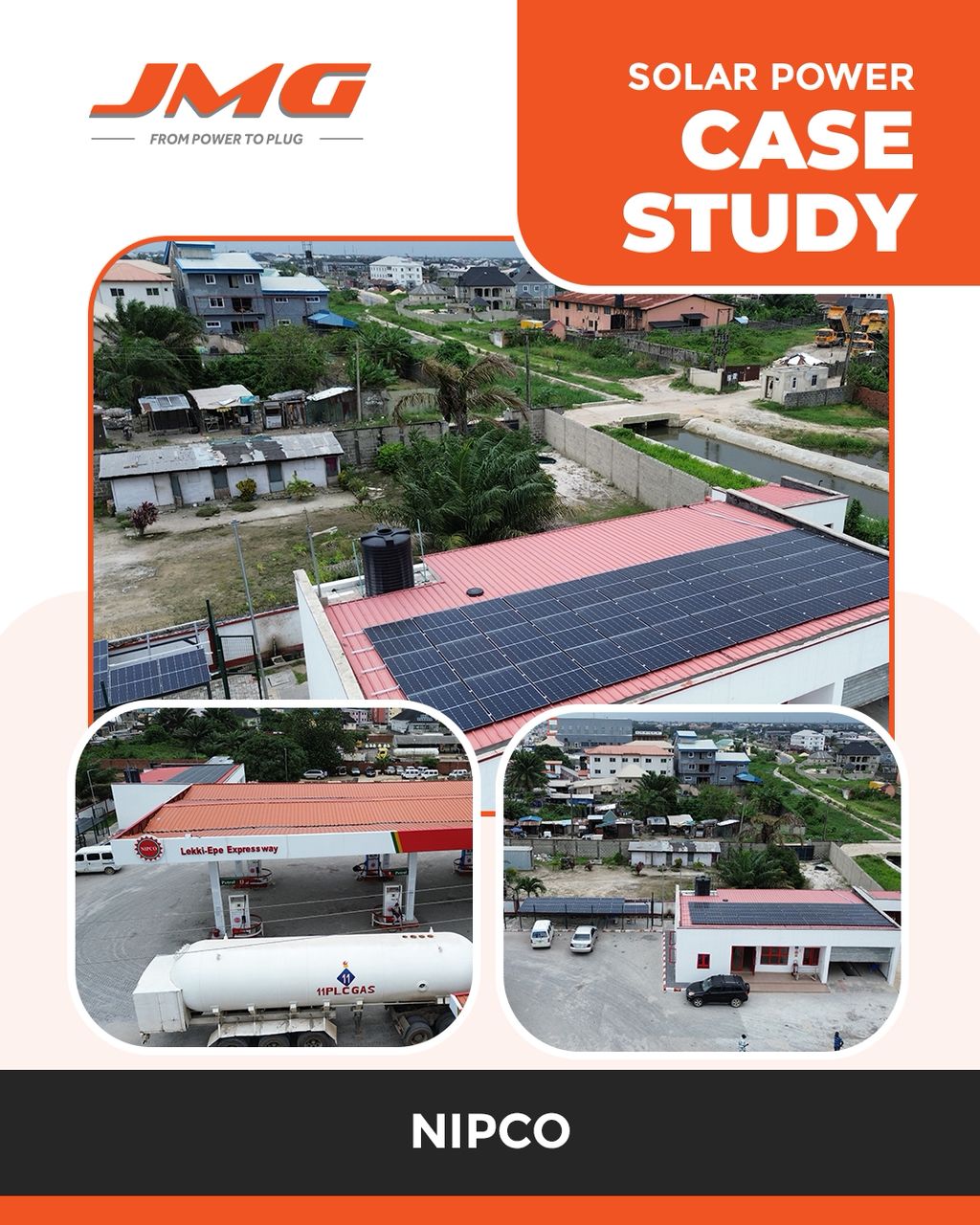
By Aduragbemi Omiyale
Nigeria’s trusted hybrid and integrated electromechanical energy provider, JMG Limited, has completed the installation of solar power systems at three key fuel stations of NIPCO Plc.
The clean energy source was installed at NIPCO’s petrol dispensing outlets in Gwagwalada Abuja, Lekki Lagos, and Mpape Abuja.
This will help the organisation eliminate diesel reliance, and unlock more than N44 million in annual energy cost savings.
The installations feature advanced hybrid systems, combining solar arrays, lithium battery storage, and smart inverters to provide 24/7 energy for fuel pumps, lighting, and office operations. Each site has reported zero use of electricity or generator power since the systems were installed.
The three NIPCO stations now run on an advanced hybrid solar system that combines high‑efficiency PV panels, intelligent lithium‑battery storage and smart inverters.
Since commissioning, the sites have operated with zero grid or generator power, providing silent, clean, uninterrupted electricity for pumps, lighting and administration.
“We are proud to help NIPCO lead the energy transition at the retail level.
“The scalable architecture can be sized to each location and has already delivered significant savings, about 88,535 kWh/year, N44.4 million in annual cost savings and a 43.8‑tonne reduction in CO₂ emissions,” the Head of JMG’s Hybrid Solar Division, Mr Abbass Hussein, stated, adding that, “Collaborating with NIPCO on this initiative demonstrates a practical pathway for other firms to reduce both emissions and energy expenses.”
Also commenting, NIPCO’s Station Manager at Gwagwalada, Mr Idoko Jacob, said, “The stations have not relied on electricity or generator power on bright-weather days since commissioning. The solar systems fully meet our daily energy needs during such periods. On days with poor weather, we supplement the solar system with generator power to ensure uninterrupted operations.”
Business Post gathered that the NIPCO Gwagwalada Station has a solar output of 42,450 kWh/year, annual savings of N15.6 million, and CO₂ reduction of 15,332.76 kg/year, with a system installed consisting of a 20kW Deye LV Hybrid Inverter, 26.8kWp Solar PV, and 51.2kWh Lithium Battery Storage.
The NIPCO Lekki Station has a solar output of 3,635 kWh/year, annual savings of N12 million, and CO₂ reduction of 13,130.1 kg/year, with a system installed consisting of a 25kW Must Hybrid Inverter, 22.95kWp Solar PV, and 76.8kWh Lithium Battery Storage.
As for the NIPCO Mpape Station, it has a solar output of 42,450 kWh/year, annual savings of N16.8 million, and CO₂ reduction of 15,332.76 kg/year, with a system installed consisting of a 20kW Deye LV Hybrid Inverter, 26.8kWp Solar PV, and 61.44kWh Lithium Battery Storage.
Brands/Products
MAGGI Unveils ‘Taste of Christmas’ Campaign

MAGGI, the culinary brand from Nestlé Nigeria, has announced the launch of its festive campaign, Taste of Christmas, designed to celebrate the sights, sounds, and flavours that define the Nigerian Christmas experience.
Central to the campaign is a collaboration with Nigeria’s fast-rising pop star Qing Madi and the renowned Loud Urban Choir, resulting in a new Christmas anthem titled Taste of Christmas.
Now available across all major music streaming platforms, the song blends contemporary sound with cultural warmth, evoking the joy of family, togetherness, and shared meals that characterize the season.
Extending beyond music, the Taste of Christmas campaign will roll out a curated series of festive recipes and culinary inspiration over a 12-day period. The collection features creative twists such as Coco Bongus, alongside beloved Nigerian classics, encouraging families to explore new flavours while enjoying MAGGI’s trusted range of seasonings.
Commenting on the campaign, the Category Manager for Culinary at MAGGI, Ms Funmi Osineye, said, “Christmas is a time when family, culture, and shared experiences come alive. With the Taste of Christmas campaign, we set out to create a platform that resonates strongly with today’s young adults while still celebrating the warmth of home. Partnering with Qing Madi and The Loud Urban Choir allows us to connect music and food in a way that feels authentic, modern, and deeply Nigerian.”
The campaign further reflects MAGGI’s commitment to celebrating home-grown talent, nurturing culinary creativity, and strengthening the role of food as a unifying force in Nigerian homes.
Consumers can access festive recipes, campaign content, and the Taste of Christmas anthem on MAGGI’s digital platforms and social media channels. Conversations around the campaign can be followed using #MAGGIChristmas.
MAGGI is a leading culinary brand from Nestlé Nigeria, committed to inspiring better cooking habits and bringing families together through delicious, nutritious meals.
Brands/Products
FG Suspension of Sachet Alcohol Ban Excites NECA

By Modupe Gbadeyanka
The decision of the federal government to suspend the ban on alcohol produced in sachets has been welcomed by the Nigeria Employers’ Consultative Association (NECA).
The Director-General of the group, Mr Adewale-Smatt Oyerinde, described it as a right step in the right direction because it respects existing National Assembly resolutions and restores regulatory clarity.
Recall that recently, the Office of the Secretary to the Government of the Federation (OSGF) ordered the suspension of the policy due to concerns raised by the House of Representatives Committee on Food and Drugs Administration and Control.
In a statement, the NECA chief said the immediate suspension of all enforcement actions relating to the proposed ban on sachet alcohol and 200ml PET bottle products, pending the conclusion of consultations and the issuance of a final policy directive, was good for the industry and the economy.
According to him, the sachet and PET segment of the alcoholic beverage industry accounts for a significant portion of the estimated N800 billion invested in the sector and supports thousands of direct and indirect jobs in manufacturing, packaging, logistics, wholesale and retail.
He stressed that in an economy already struggling with high unemployment and rising business costs, abrupt policy measures that threaten existing jobs and legitimate investments would be counterproductive.
“We fully acknowledge the need to address public health concerns, especially regarding children and young people, but the solutions must be evidence-based and carefully designed so as not to drive activities into the informal and unregulated economy or encourage illicit products.
“We are looking forward to a deepened consultation to enable the protection of jobs, livelihoods and legitimate investments, etc., while also ensuring that public health objectives are effectively and sustainably achieved,” Mr Oyerinde said.
-

 Feature/OPED6 years ago
Feature/OPED6 years agoDavos was Different this year
-
Travel/Tourism9 years ago
Lagos Seals Western Lodge Hotel In Ikorodu
-

 Showbiz3 years ago
Showbiz3 years agoEstranged Lover Releases Videos of Empress Njamah Bathing
-

 Banking8 years ago
Banking8 years agoSort Codes of GTBank Branches in Nigeria
-

 Economy3 years ago
Economy3 years agoSubsidy Removal: CNG at N130 Per Litre Cheaper Than Petrol—IPMAN
-

 Banking3 years ago
Banking3 years agoFirst Bank Announces Planned Downtime
-

 Banking3 years ago
Banking3 years agoSort Codes of UBA Branches in Nigeria
-

 Sports3 years ago
Sports3 years agoHighest Paid Nigerian Footballer – How Much Do Nigerian Footballers Earn





